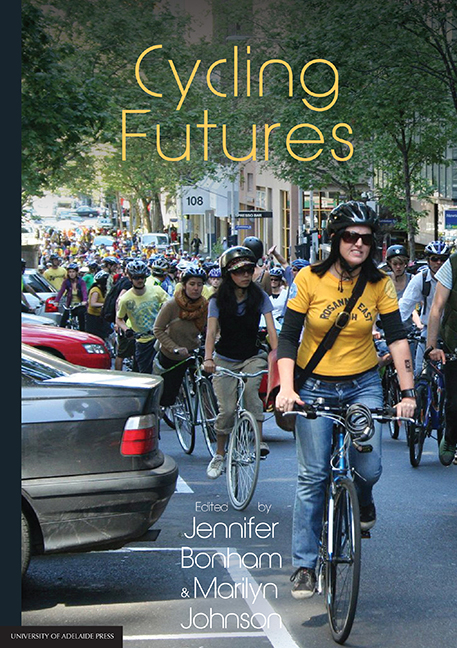Book contents
- Frontmatter
- Contents
- Preface
- Editors
- Contributors
- PART I Current challenges
- 1 Cycling: Bringing the future into the present
- 2 A glimpse at Australia's cycling history
- 3 Health benefits of cycling
- 4 An epidemiological profile of cycling injury in Australia and New Zealand
- 5 Faster than the speed of bikes
- 6 Economics of everyday cycling and cycling facilities
- 7 Cycling and sustainable transport
- 8 Cycle touring
- PART II Strategies for change
2 - A glimpse at Australia's cycling history
from PART I - Current challenges
Published online by Cambridge University Press: 25 July 2017
- Frontmatter
- Contents
- Preface
- Editors
- Contributors
- PART I Current challenges
- 1 Cycling: Bringing the future into the present
- 2 A glimpse at Australia's cycling history
- 3 Health benefits of cycling
- 4 An epidemiological profile of cycling injury in Australia and New Zealand
- 5 Faster than the speed of bikes
- 6 Economics of everyday cycling and cycling facilities
- 7 Cycling and sustainable transport
- 8 Cycle touring
- PART II Strategies for change
Summary
Introduction
The island continent of Australia and the bicycle seem almost to have been made for one another. The machine was widely adopted from 1890, and over the next three decades was routinely ridden over greater distances as part of daily rural life than anywhere else on earth. By 1896 there was an extensive and well-used bicycle path network in Western Australia that linked communities over an area of some 350 000 km2, one and a half times the size of Victoria — the largest such bicycle path system in the world at the time (Fitzpatrick, 1980a, pp. 110-116). At the turn of the twentieth century, cycle racing — centred in Europe and North America — was the most popular, lucrative and widely followed sport internationally. Yet, half a world away, Australia sponsored the world's richest race and still hosts the oldest continuous track race, the Austral Wheel, and the second-oldest road race, the Melbourne to Warrnambool, in existence (Fitzpatrick, 2011, p. 85). As well, the bicycle saw its first significant military use during the Boer War of 1899-1902, in which experienced Australian bush cyclists demonstrated the machine's wartime value (Fitzpatrick, 1998, pp. 67-70).
This chapter presents an overview of Australian cycling history, from the early high wheeler to the present day. It considers the machine's utilitarian nature and effectiveness in the Australian environment. It reviews its social impact, both rural and urban, and role in the development of modern tourism and road maps. It surveys the bicycle craze of the 1890s, and its unique employment on the West Australian goldfields, including the cycle messenger services and camel pad interaction. It looks at the bicycle's widespread adoption by rural workers through the early twentieth century, the machine's decline in use by 1970, and its subsequent resurgence.
A remarkable cycling history
Australia's first cycling phase was occasioned by the introduction of the high wheeler or penny-farthing cycles (also known as ordinaries) in 1875, with Melbourne the premier centre. In 1884, Alf Edward became the first person to cycle from Melbourne to Sydney, taking eight and a half days. Australia's most famous high wheeler cyclist was George Burston who, with HR Stokes, undertook a round-the-world journey in 1888, and was among the few world cyclists to do so (Burston & Stokes, 1890).
- Type
- Chapter
- Information
- Cycling Futures , pp. 25 - 42Publisher: The University of Adelaide PressPrint publication year: 2015



